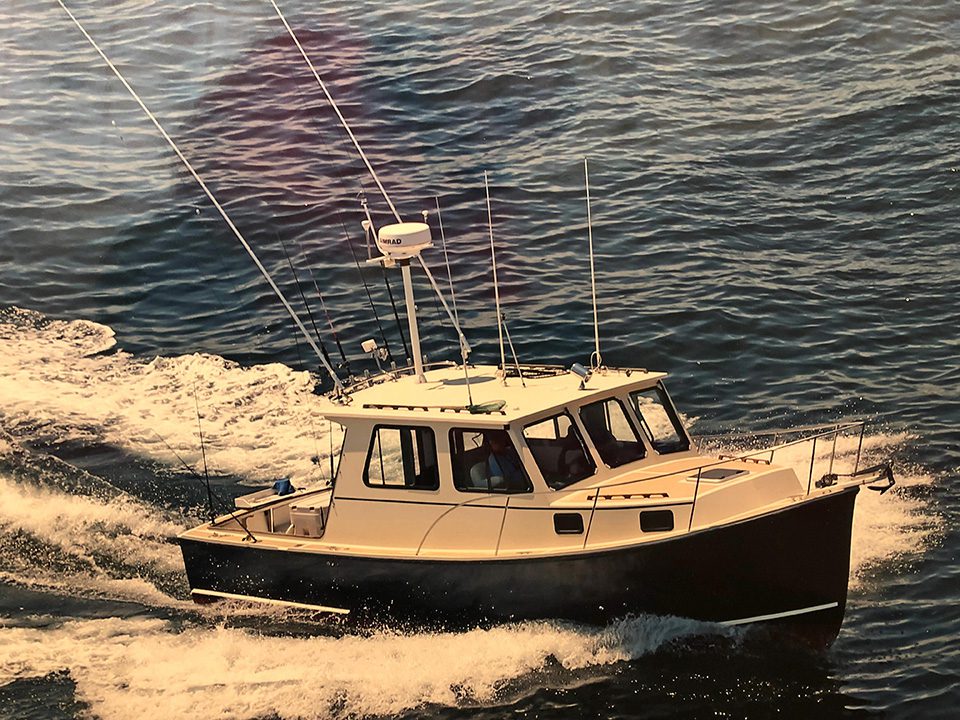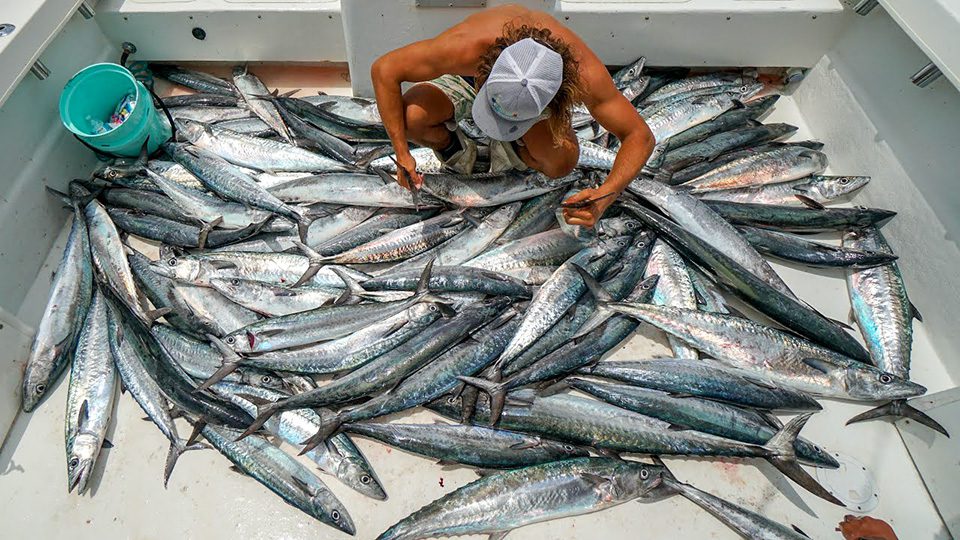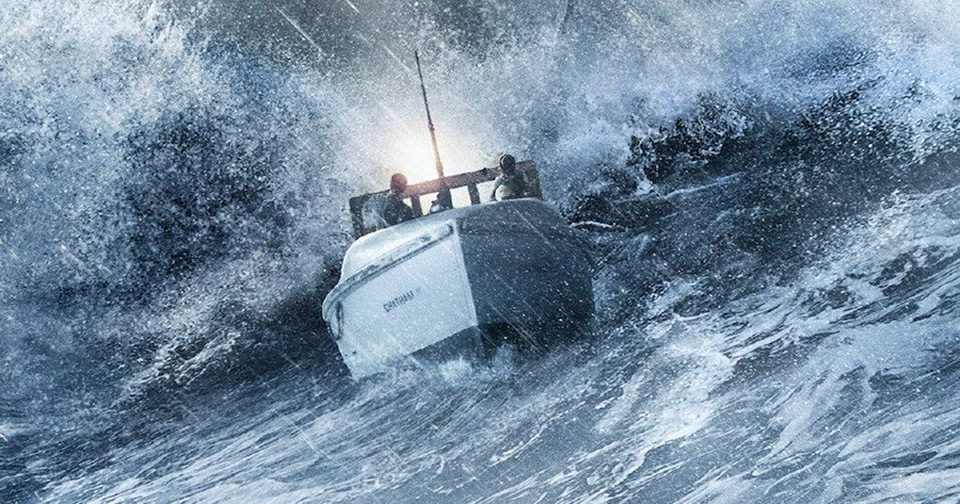A Real Sea Story Off the Georgia Coast
By Cap Fendig
In 1982, I started commercial fishing off the Georgia coast. That first season I learned a lesson that nearly cost me everything, including the lives of captains and crew.
You see, I made lots of money May through Labor Day running charter fishing trips. I still do, to this day. But back then the charter business dried up about the time kids went back to school. From fall into spring, commercial fishing would provide year-round cash flow… but you had to have the right boat.
For distance, you needed diesel to run 70 to 120 miles offshore. The capability to hold 5 to 10 thousand pounds of fish was also a necessity, and most of all, you needed a reliable vessel to take you there and back, no matter the weather. Without satellite technology and out of shore range for VHF radio, you were out there alone with no ability to call for help. But I wanted to fish the deep water in the off season, because that’s where the money was.
My charter customers Mack Carlton, an Atlanta attorney, and Bob Shearer, the president of Georgia Power, agreed to invest in a boat, and I studied the options. I decided on a 32’ BHM built by Flye Point Marine in Blue Hill, Maine. It’s a lobster Hull design, and I gave them my specifications and ordered it. I oversaw the boat’s construction in Brooklyn, Maine and then ran it down the East Coast to Golden Isles Marina in St. Simons, GA.
It was a heck of a boat. I caught king mackerel, grouper, snapper and other species and sold them to Charlie at Pelican Point Restaurant or to markets in Mayport, FL. I was making money and learning. Local Steve Pello was doing the same, and I met Capt. Danny Patrick (Co-publisher of Coastal Angler Magazine Northeast Florida Edition), a very good fisherman out of Mayport. We would kind of rendezvous 90 miles out to fish in the same proximity for safety. Remember, we were way out, and there was no one to help if something went wrong. So, we all kind of ran together.
Off the Georgia coast, cold fronts start showing up in fall and push through our coastal waters out to the open ocean. The fishing pattern called for us to be ready as soon as a front passed. With calm seas, we rode out behind the weather and the fish would start to “come on the bite.” They fed heavily while high pressure built over the area. We would load up the hold, run back to sell the fish, and then rest up before the next trip.
It was hard work, and risky, but it was very exciting. You saw things no one else saw: A migration of monarch butterflies 90 miles out; Navy submarines surfacing nearby; great white sharks before anyone knew they were in the area; hundreds of offshore dolphins moving in giant schools and jumping 15 feet out of the water; a million stars in the darkest skies you’ve ever seen.
On this specific trip, Capt. Patrick and his first mate Paul met us 80 miles offshore a week before Thanksgiving. Onboard my boat were my cousin Dru Doyal and a retired corporate insurance salesman named Jack Hicks. We knew the next front was due in four days, and we had to beat it back in. So, we fished hard. On the third night, large schools of king mackerel moved through, and we absolutely loaded the boat. Capt. Patrick was killing it, too! Both of us filled our deck ice boxes with 5,000 pounds of kingfish and another 1,000 pounds of grouper, snapper and other fish. We were done. There was no room for more fish!
At 9 p.m. the seas were flat with no wind. Ever heard the expression, “calm before the storm?” Friends, that is TRUE. That night we anchored, and Patrick literally pulled his boat over and rafted up with us to eat dinner and revel in the day’s amazing catch as we repacked the fish on ice. At about 11 p.m., we agreed to depart after breakfast, and Patrick motored 100 yards off to anchor for the night.
Now, I had been listening to the weather and was somewhat concerned. Temps in the approaching front were dropping and so was the barometer. This was not good news, and I talked it over with Patrick on the VHF. Shortly before midnight, we agreed to push our departure up to sunrise to try and beat the approaching front. I put Doyal on watch until 3 a.m. Hicks would relieve Doyal at 3:30 a.m. I would have the helm for our 6:30 a.m. departure.
When I lay down in my bunk, there was no wind, no sound and hardly any movement in waves or swell. I woke to some light waves at about 3 a.m. I thought a ship might have passed close by, and I went up top to check it out. It was a large, elongated swell. There was no ship anywhere around. I felt the Spirit of God in my heart telling me to pull anchor and start heading in. I got Hicks up and radioed Patrick to tell him how I felt. He agreed and we both pulled up anchor to head in.
By 5 a.m. the wind was blowing 45 knots from the northwest with 10-foot seas building. As the winds increased, we faced waves 15 to 25 feet high, and it was only getting worse. All hell was breaking loose, and I couldn’t see Patrick’s boat off my port side, although I thought I saw a light out there through the driving rain.
While I clutched the wheel, Doyal and Hicks lay spread eagle on the floor trying to brace themselves from being thrown all over the inside of the cabin. It was like being in the ring boxing with Ali as the wind and waves hammered us without mercy. I was scared. It was the most violent sea conditions I’ve ever experienced.
“Cap! Cap!” the radio squawked. “This is Danny! HELP! Didn’t you see my flares!”
I couldn’t see him. A big wave had blown through one of his windows with the force to throw his batteries out of the box. It jerked the cables loose, the lights went out, the engine shut down and he had been dead in the water being pounded by waves.
While being thrown around the cabin, Patrick somehow managed to get the window sealed, restore power and get his engine running. There was no GPS back then, so I gave him my coordinates off my Loran C. We figured he was about 15 miles behind me, and as another wave hit me so hard the boat shuddered, I told Patrick we’d meet him at the sea buoy at the entrance to the St. Simons ship channel.
The violence of it all was terrifying over the ensuing hours, and it crept into my mind that we might not make it as the boat shook and shuddered from the pounding of riding 30 feet to the top of the wave and crashing down the backside to hit the rise of the next. Anyone who saw the movie The Perfect Storm, will have a good idea of what it was like.
As dawn approached, I could at least begin to see the direction of the waves and their size so I could power the boat up to the top at an angle. When we reached the crest, I would pull off on the throttle to reduce speed so we wouldn’t launch in a free fall into the trough. For hours, we zig-zagged, powered up the waves and throttled down to slide down their backs. I was fearful, but I was able to keep my calm because of the focus required to steer the vessel and keep us upright. This went on and on and on, pounding the crap out of us. It was so rough we couldn’t take turns driving the boat. Hicks and Doyal were spread eagle being thrown up and down.
At some point, I realized we were not going to make the St. Simons shipping channel. The waves and wind were forcing me off course to the northwest. Our closest viable option was Sapelo Sound, about 30 miles north of our original target. The entrance at Sapelo was poorly marked. There are lots of sandbars and you must make a tricky 90 degree turn north then back southwest and then northwest again before you make it to inland waters. Fuel was running low, and if we didn’t make Sapelo Sound, the next opportunity for safe harbor was another 10 miles north at St. Catherines. Calculations showed we didn’t have enough fuel to reach St. Catherines.
I radioed Patrick to discuss the dilemma, and he agreed. We had one shot, and we changed course for Sapelo as the brutality of the storm continued.
At about 5:30 p.m., we were exhausted but relieved to finally see the sea buoy for Sapelo Sound. The waves had subsided into a 6-foot chop, and we had $10,000 or more worth of fish that needed fresh ice. Doyal was too seasick to move, so Hicks volunteered to go out and ice our catch. I made him wear one of those bulky commercial life preservers. It was still blowing hard, and I watched Hicks carefully. As I made first turn from west to north, we were in the channel between shallow sandbars. The turn put us broadside to the waves, and one hit us so hard it literally picked up a 6-foot, 4-inch guy and tossed him overboard. I was watching. It was a perfect backflip over the side of the boat into 6-foot waves, shovel in the air.
“Jack’s overboard!” I hollered at Doyal. “You’ve got to get up and go help! I can’t leave the wheel or we’ll run aground!”
Doyal got up with what strength he had. It was still blowing 30 knots, and I maneuvered the boat to make a grab for Hicks. We ran out on the rear deck, threw a rope ladder over and miraculously got him back in the boat. I don’t know how. This is a single-engine boat with a fixed keel, but God’s angels helped. There’s no other way to explain how we got this big, tall, elderly retired insurance agent back in the boat without running aground. Any boater who has been through Sapelo Sound knows what I mean.
When we steered into protected waters, I radioed Patrick to let him know we made it and would wait for him. It was getting dark now, and at about 9 p.m. Patrick made it into Sapelo Sound. We proceeded down the Intra-Coastal toward St. Simons. At the next sound south, Altamaha Sound, Patrick called. He was out of fuel and his engines shut down. We turned back to get him and took him under tow.
We arrived at St. Simons around midnight, exhausted, kissing the dock and thanking Jesus we were all alive. We all went to sleep and returned to the boats at about 11 a.m. We still had a lot of fish to sell. I called Red Stanford at City Market, David Lewis at Lewis’s Crab, Gene Wells at Sea Harvest and Mr. Phillips at Pelican Point. Patrick got on the phone with Mayport Seafood and some other seafood dealers to no avail. We were three days from Thanksgiving, and no one buys seafood on Thanksgiving week. Finally, an Atlanta fish market brokered a deal to ship our catch to California. We got 65 cents per pound, when we had been getting $2.65 per pound.
It was a catastrophic loss, and we almost lost our lives over it. We fished out the winter and spring and chartered through the summer. Danny Patrick came to work for me for a while, and we are still good friends. My cousin Dru and Jack Hicks both passed away.
I still boat and charter fish. I don’t go 90 miles out anymore, and every time I watch The Deadliest Catch, I know what they go through.
I thought you might enjoy a real sea story.
Cap Fendig owns Cap Fendig’s Tours at St. Simons Island, Ga. Check out their website at https://www.capfendig.com/


